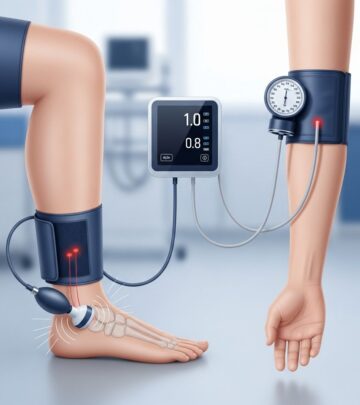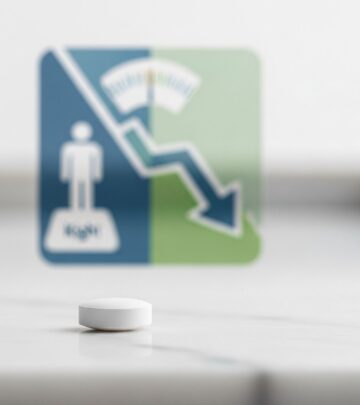Mupirocin Topical: Uses, Safety, Dosage, and Patient Guidance
Understand mupirocin topical: prescription uses, safety precautions, application tips, side effects, and answers to common questions.

Mupirocin Topical: Overview
Mupirocin is a prescription-only topical antibiotic used to treat certain skin infections caused by bacteria. It is not effective against fungal or viral infections. Mupirocin’s clinical utility lies primarily in its ability to target and inhibit the growth of bacteria like Staphylococcus aureus and Streptococcus species, making it an essential medication for skin conditions where these organisms are implicated.
Important Information About Mupirocin Topical
- Main purpose: Treats mild-to-moderate bacterial skin infections (e.g., impetigo, folliculitis, minor wounds infected with bacteria).
- Mechanism: Inhibits bacterial protein synthesis necessary for their growth and survival.
- Common brands: Bactroban®, Centany®.
- Formulations: 2% topical ointment and 2% topical cream.
- Requires prescription; not for over-the-counter use.
- Not suitable for infections caused by fungi, viruses (like herpes), or for use in the eyes or on severe burns without explicit medical direction.
What Is Mupirocin Topical Used For?
Mupirocin is designed for external use only and specifically treats the following bacterial skin infections:
- Impetigo: A highly contagious, superficial skin infection common in children, marked by honey-colored crusts.
- Secondary infected traumatic skin lesions: Minor cuts, scrapes, or wounds that have become infected.
- Folliculitis: Infection of hair follicles that leads to redness and pustules.
- Bacterial colonization: Sometimes used to eradicate Staphylococcus aureus (including MRSA) from nasal passages (see nasal formulation) or to reduce skin carriage in high-risk settings.
Physicians may prescribe mupirocin topical for other off-label uses if considered medically appropriate—always follow professional instruction.
How Does Mupirocin Work?
Mupirocin works by blocking bacterial protein synthesis, which is necessary for bacteria to grow and multiply. Without this function, bacteria lose their ability to replicate or repair themselves, causing the infection to resolve. Its specificity makes it highly effective against certain strains—including resistant forms like MRSA (methicillin-resistant Staphylococcus aureus).
How to Apply Mupirocin Topical
- Preparation: Gently wash and dry the infected area. Always wash your hands before and after applying mupirocin unless treating a hand infection.
- Application: Apply a thin film of ointment or cream to the affected skin using a clean fingertip or cotton swab. Do not apply inside the mouth, nose (unless specifically instructed), eyes, or over large areas of broken skin.
- Dressing: A sterile gauze dressing may be used to cover the treated area if advised by your healthcare provider.
- Frequency: Usually applied two to three times a day, as prescribed, for up to 10 days, or until the infection has cleared.
- Full Course: Complete the entire course as prescribed even if symptoms resolve early—stopping treatment prematurely increases the risk of recurrence and bacterial resistance.
Note: If accidental contact occurs with the eyes, rinse thoroughly with plenty of water.
Precautions Before and During Use
- Allergies: Inform your healthcare provider if you are allergic to mupirocin or any other related medications.
- Other medications: Tell your doctor about all current prescription and over-the-counter medications, supplements, and herbs before beginning mupirocin to avoid interactions.
- Pregnancy and breastfeeding: Mupirocin is generally considered safe when used as directed, but consult your healthcare provider for advice specific to pregnancy or breastfeeding situations.
- Systemic illnesses: Notify your physician of any underlying illness, wounds, or compromised immune function.
- Large or deep wounds: Not recommended except under medical supervision—particularly with burns or extensive injuries.
What to Do If You Miss a Dose
- Apply the missed dose as soon as possible.
- If it is almost time for your next dose, skip the missed one. Do not apply double doses to make up for a missed application.
What Are the Possible Side Effects of Mupirocin?
| Common Side Effects | Uncommon/Rare Side Effects |
|---|---|
|
|
Warning: Discontinue use and seek immediate medical attention if you develop signs of a serious allergic reaction or if infection worsens during treatment.
Comparing Mupirocin to Other Topical Antibiotics
| Antibiotic | Target Bacteria | Common Uses | Resistance Concerns |
|---|---|---|---|
| Mupirocin | Staphylococcus aureus, including MRSA; Streptococcus spp. | Impetigo, minor skin infections, MRSA colonization | Possible if used long-term or inappropriately |
| Bacitracin, Neomycin | Broad-spectrum, various gram-positive and some gram-negative bacteria | Minor cuts and scrapes (over-the-counter use) | Variable, increasing in some strains |
Key Point: Mupirocin is often preferred in situations where Staphylococcus aureus (especially MRSA) is the likely pathogen.
Risks of Resistance
Like all antibiotics, misuse or overuse of mupirocin may result in bacterial resistance. Strains of Staphylococcus aureus have been documented to develop resistance, particularly with prolonged or repeated use. Minimize this risk by:
- Using mupirocin only as prescribed
- Completing the full course
- Not sharing medications
- Consulting a healthcare provider if no improvement occurs within 3–5 days
Storage and Stability
- Store mupirocin at room temperature (68°F to 77°F / 20°C to 25°C).
- Avoid exposure to extreme temperatures (do not freeze).
- Keep away from direct sunlight and moisture.
- Keep out of reach of children.
When to Seek Medical Advice
- If the infection becomes worse or does not improve after 3–5 days of use.
- If you develop severe burning, swelling, allergic reactions, or other worrying symptoms.
- If there are signs of a spreading or systemic infection (fever, chills, or involvement of large skin areas).
Safe Use During Pregnancy and Breastfeeding
- Mupirocin is usually considered safe for use during pregnancy and breastfeeding, provided it is used as directed.
- Always consult your healthcare provider before starting any medication during pregnancy or while nursing.
Frequently Asked Questions (FAQs)
Q: Can I use mupirocin for all skin infections?
A: No. Mupirocin treats bacterial skin infections, mainly those caused by Staphylococcus aureus or Streptococcus species. It is ineffective for fungal, viral, or parasitic infections.
Q: What if I get mupirocin in my eye or mouth?
A: Wash the area with plenty of water. Seek medical advice if irritation persists.
Q: Can I use this ointment on burns?
A: Do not use mupirocin on burns unless specifically prescribed by a healthcare provider.
Q: Is it safe for children?
A: Yes, when prescribed by a healthcare provider, mupirocin is commonly used to treat impetigo in children.
Q: What should I do if I miss a dose?
A: Apply the missed dose as soon as you remember. Skip it if it is nearly time for your next dose, and do not apply extra medication to make up for it.
Q: How long should I use mupirocin?
A: Use as prescribed, usually for 5 to 10 days. Do not use longer unless specifically instructed by your healthcare provider.
Q: Can I apply a bandage after using mupirocin?
A: Yes. You may cover the treated area with a sterile gauze dressing if directed by your healthcare provider.
Key Points and Safety Recap
- Mupirocin is a topical antibiotic used to treat minor bacterial skin infections.
- Apply only on affected skin, not internally or over large open wounds without guidance.
- Follow dosing, do not miss applications, and finish the full course as prescribed.
- Watch for side effects and signs of allergic reaction; stop and seek help if serious reaction occurs.
- Misuse leads to resistance; use only as directed by a healthcare provider.
Read full bio of Sneha Tete












